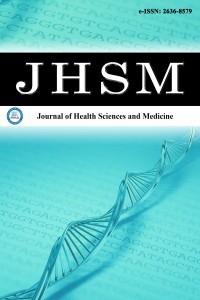
Journal of Health Sciences and Medicine
Yazarlar: ["Recep YEVGİ", "Nuray BİLGE"]
Konular:-
DOI:10.32322/jhsm.1054313
Anahtar Kelimeler:Guillain Barre Syndrome,COVİD-19,EMG,CMAP,SNAP,Distal latency,Conduction velocity
Özet: Aim: The aim of this study is to compare the electrophysiological features of patients with Guillain-Barré syndrome (GBS) after Coronavirus disease–2019 (COVID-19) and the electrophysiological features of patients with non-COVID-19 GBS and to determine whether there is a difference between these two groups in terms of nerve dysfunction. Material and Method: The electromyography results of the patients followed up with the diagnosis of GBS between December 2019 and December 2021 in the Neurology Department of Atatürk University Faculty of Medicine were retrospectively analyzed. Patients with a history of COVID-19 in the 6-week period before the occurrence of GBS were considered as the post-COVID-19 GBS group. Patients who did not have a history of COVID-19 but developed GBS were considered the non-COVID-19 GBS group. Electrodiagnostic findings of the patients were compared between two groups. Results: Motor compound muscle action potential (CMAP) amplitude of the median nerve was detected as 1.94±1.43 mV in post-COVID-19 GBS group and 5.94±4.6 mV in non-COVID-19 GBS group (p<0.05). On the other hand, motor CMAP amplitude of ulnar nerve was 2.82±1.61 mV in post-COVID-19 GBS group and 6.28±4.2 mV in non-COVID-19 GBS group (p<0.05). Motor CMAP amplitude of the tibial nerve was detected as 1.3±1.06 mV in post-COVID-19 GBS group and 3.5±3.6 mV in non- COVID-19 GBS group (p<0.05). No significant difference was observed between the two groups in terms of other parameters. Conclusion: Motor CMAP amplitudes of median, ulnar and tibial nerves were significantly low in post-COVID-19 GBS group when compared with non-COVID-19 GBS group. This result may indicate that the degree of axonal involvement and related nerve dysfunction in post-COVID-19 GBS patients in the acute period is higher than in non-COVID-19 GBS patients.